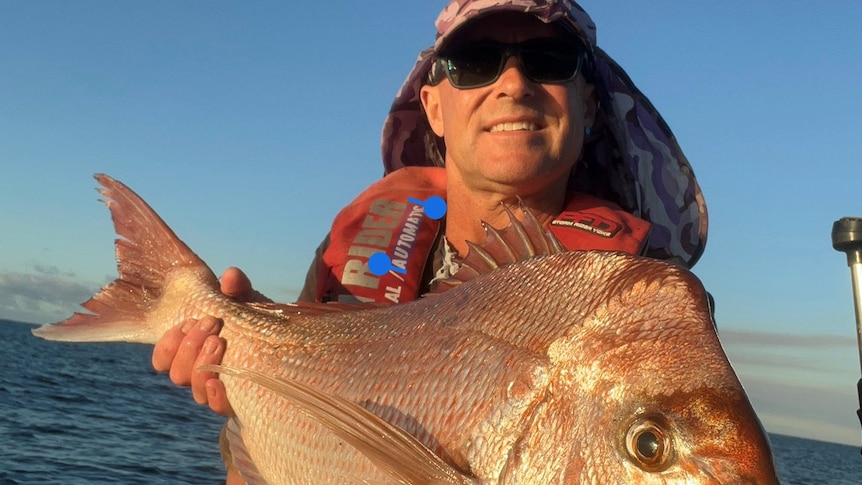Thirty years ago, passionate snapper fisher Damon Sherriff was lucky to catch 10 a year in Tasmania.
In the past few years, however, he’s seen his catch rate jump.
“I’ve actually caught over 200 [snapper] per season, so it just shows you how much the species has exploded in Tasmania,” he said.
Mr Sherriff has been chasing snapper since the early 1990s and mainly fishes out of the Tamar estuary in the state’s north.
And while he also loves a fresh fillet, the catch rate for his favorite eating fish, King George whiting, has skyrocketed as well.
“The whiting is another emerging species; it’s a fish that’s always been in Tasmania like the snapper, but the last few years it’s really exploded and it’s a very common fish now.”
His experience hooking more warm-water fish in Tasmanian waters is backed up by new research from the Institute of Marine and Antarctic Studies (IMAS).
Scientists looking at key biological and ecological traits of snapper, yellowtail kingfish and King George whiting have found all three are settling in.
“They’ve become more and more abundant in Tasmania,” marine scientist Alexia Graba-Landry said.
“As waters become warmer over a greater proportion of the state, that leads to better habitat for these fish and they’re likely to become more abundant.”
The research found that yellowtail kingfish were present in Tasmanian waters between October and May as small immature fish, while snapper were present year-round and there were reproductively mature adults.
King George whiting were also in Tasmania year-round and with adults successfully reproducing, the research said.
“There are historical records of King George whiting since the 1920s but they’re only occasional records, so increasingly we are finding more and more reports of King George whiting in Tasmania from recreational and commercial fishers,” Dr Graba-Landry said.
“For all three species, under future warming the habitat is likely to become more suitable, therefore they are likely to extend their range and increase their abundance.”
The scientific team also ran data through modeling to work out what effect future population increases would have on local ecosystems.
“Across all scenarios there’s little evidence for any ecosystem collapse should these species extend their range and increase their abundance,” Dr Graba-Landry said.
It’s good news for fishers — King George whiting has become so comfortable it’s been flagged by IMAS as a developing fishery to keep an eye on.
“We’re presented with this unique opportunity to proactively manage these emerging fisheries,” Dr Graba-Landry said.
A lot of the research was done with the help of recreational fishers.
Instead of throwing out their fish waste, they have been donating their fish skeletons to scientists, helping them fill critical knowledge gaps on some species.
There were 16 drop-off points at tackle shops around the state.
“There was a lot of enthusiasm; 30 recreational fishers regularly donated frames,” Dr Graba-Landry said.
Mr Sherriff donated his fair share. For the avid fisher, snapper will remain his favorite.
The amateur artist and fish taxidermist loves to draw and paint them and the prettier ones go on the wall.
“I love the colors in the snapper… I’m an arty-farty person and I really enjoy looking at a snapper fresh out of the water,” he said.
“I really enjoy trying to replicate the colors in a fish.”
.
